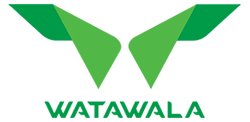Carolina Tea Factory stands as a guide at the entrance to the western highlands, where teas of exquisite quality are manufactured almost throughout the year. It is at this point that the entire scenery changes from the clusters of tea to an unbroken mantle green. To the disconnecting visitor, Carolina tea plantation will offer a true representation of the immense work that goes into producing their favorite beverage.
It would be an unforgettable encounter to watch the tea pluckers with their fine glossy hair and dreamy eyes, decorated with silver ornaments, and other gay clothes of many colors, wending their way through cramped tea bushes, to pluck just the two leaves and the bud that required producing the best teas in the world.
To such extent does practice quicken the action of eyes, brain and finger, which is difficult for the inexperienced to believe how carefully chosen is each leaf that falls into the basket. Only the young and succulent is used in manufacture. For over hundred years, Carolina has taken immense care of its priceless possession of tea and continuous to do so, to offer the world a perfect cup of tea.
Carolina Tea Company of Ceylon Ltd. Incorporated in 1892 is one of the pioneer tea companies in the country, set up primarily to plant tea. It consisted of a group of plantations situated in Lower Dickoya. They were Agarawatte, Carolina, Kandawella, Mount Jean, Wigton, Udeapola Group, Trafalgar, Goarfell and St.Margaret Estates.The Management of this group that was originally with Leechman and Company changed to Mackwoods Estates & Agencies Ltd. at a later date.
According to the times of Ceylon Green Book of 1939, this group had over 1,000 hectares in tea, 245 hectares in rubber, a few hundred coconut trees, and 726 hectares uncultivated, comprising a total extent at the stage was considered a substantial area for administration.
The Carolina tea factory was one of the original “central factories” constructed by the river that ran by the estate, to avail themselves of water power. It was indeed an improvement to some of other factories of the day, with no mud floors and cadjan roofs. The building was of wood assembled firmly on stone pillars. It had three floors going up to the height of 42 feet from ground to ridge. Provision had been made for further expansion, but there was sufficient space to accommodate all the leaf not only from that group, but from many other adjoining plantations who were satisfied with a return of 9 cents (about 2p) per pound. The novelty was that very often than not, the green leaf arrived by train.
Jhon Walker, who was responsible for founding the present Colombo firms of Walker sons & Company and Walker & Greig, had by then acquired much prominence as a designer of plantation machinery. The task of planning and equipping Carolina factory was entrusted him. A modern factory has now been built by the road side offering a panoramic view to the causal visitor travelling up to the hills.
At the time the plantations were nationalized, Carolina group had in all 1023 hectares with 579 hectares in tea. Many other subsidiary crops had been planted on this property by then.
Carolina can boast as having within its mini hydro power project and it shows efficient energy usage in Carolina





